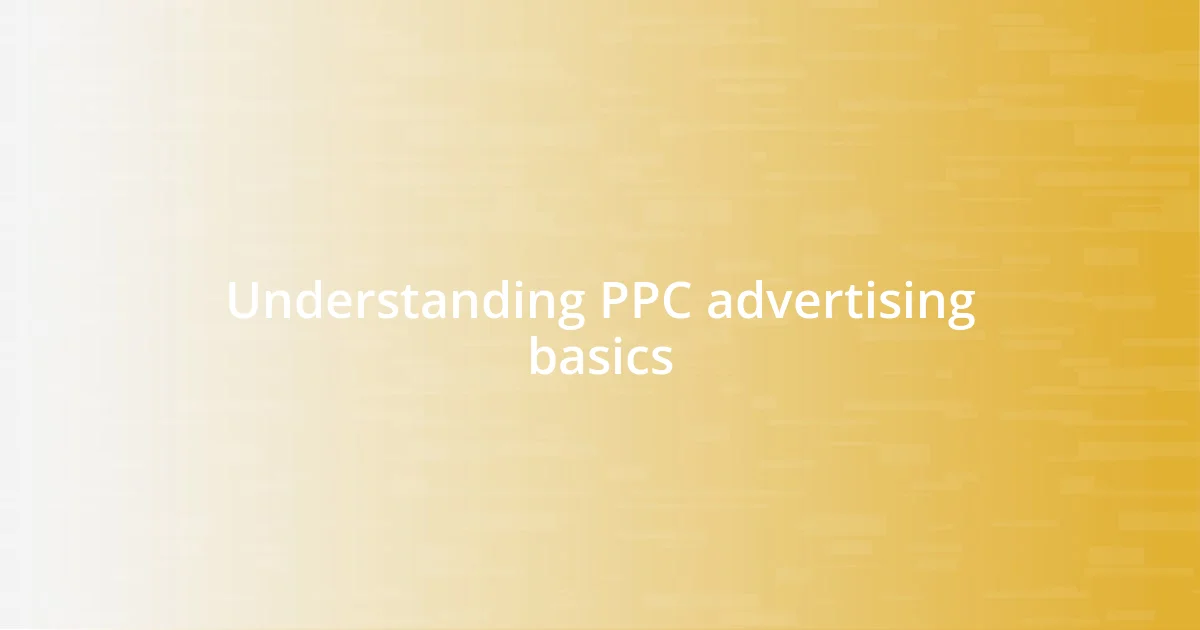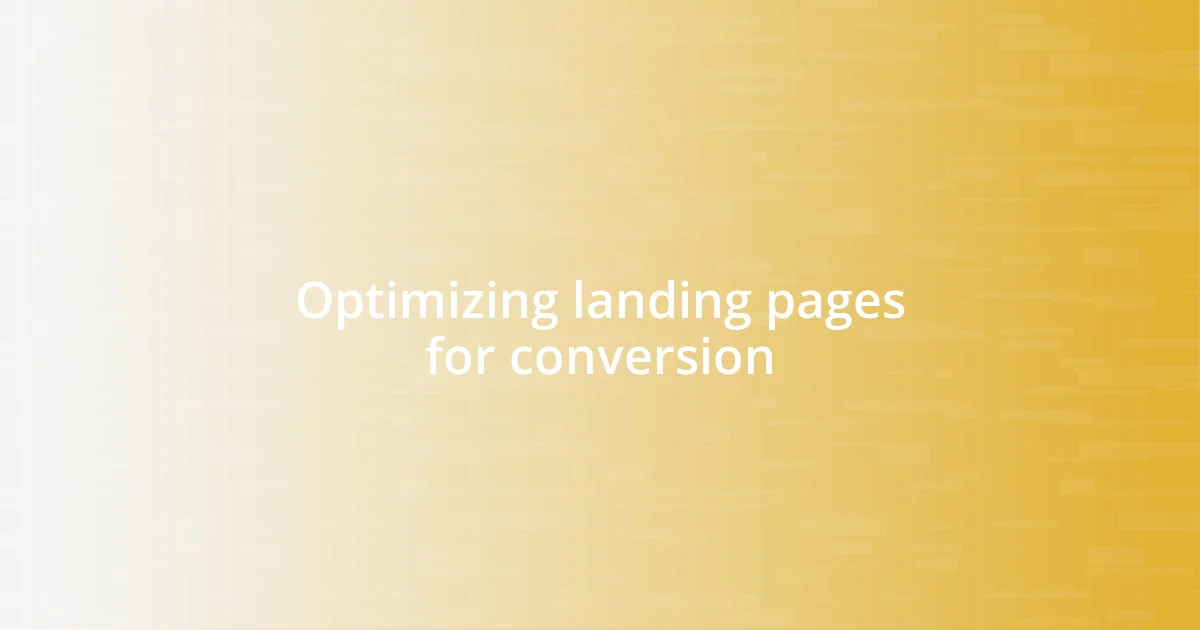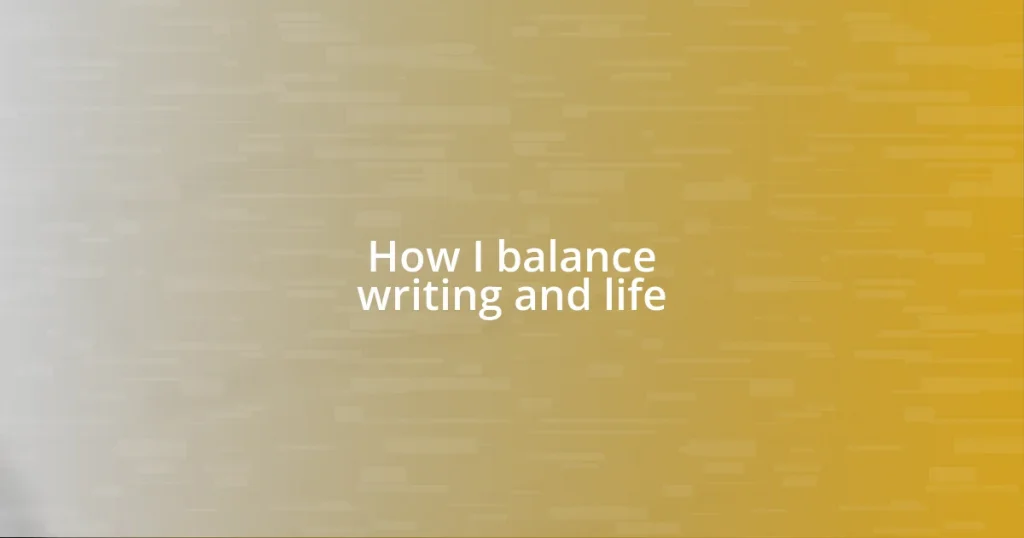Key takeaways:
- PPC advertising allows businesses to gain immediate visibility by bidding on relevant keywords, contrasting with the slower process of organic SEO.
- Choosing the right keywords is crucial; long-tail keywords often yield higher conversion rates due to their specificity and alignment with search intent.
- A/B testing and optimizing landing pages significantly enhance PPC campaign performance by allowing for data-driven adjustments to ad elements and user experience.

Understanding PPC advertising basics
PPC, or pay-per-click advertising, is essentially a way for businesses to buy visits to their sites, rather than earning those visits organically. I still remember when I first ventured into PPC; it was like a light bulb went off. The idea that I could essentially “pay to play” and see immediate results fascinated me.
The mechanics of PPC are straightforward yet powerful: you bid on keywords relevant to your business, and your ads appear alongside search results when those keywords are searched. Have you ever wondered how those links pop up at the top of your search results? This is the beauty of PPC—it gives you instant visibility, unlike traditional SEO strategies which can take time to gain traction.
In my experience, understanding how to optimize your bids and targeting can change the game. Each click holds value, and the journey from impression to conversion is thrilling. It’s critical to analyze which keywords drive the most traffic and ensure your landing pages are compelling—not just functional—to convert visitors into customers. What aspects of PPC have you found most challenging or rewarding? Each campaign is a learning curve, after all!

Choosing the right keywords
Choosing the right keywords is an essential step in PPC advertising. I vividly recall a time when I focused solely on high-volume keywords, only to find that they didn’t translate to conversions. It was a hard lesson that taught me the value of targeting long-tail keywords. They might have less search volume, but their specificity often leads to higher intent, making them more likely to convert.
When I’m selecting keywords, I like to consider the search intent behind each term. Are potential customers looking to buy, or are they just gathering information? Understanding this distinction has helped me refine my campaigns significantly. For example, I once targeted a keyword related to “best hiking shoes,” which attracted many visitors but few buyers. Shifting my focus to “buy hiking shoes online” made a world of difference in the conversion rates.
I often use tools like Google Keyword Planner or SEMrush to discover keyword ideas and assess their competitiveness. It’s fascinating how a single tweak in wording can open up a pathway to a more engaged audience. Have you experimented with these tools? They can be game changers in narrowing down the perfect keywords that align with your business goals.
| Keyword Type | Characteristics |
|---|---|
| Short-tail Keywords | Broad terms with higher search volume; often less specific and more competitive. |
| Long-tail Keywords | More granular phrases with lower search volume; typically indicate a higher purchase intent. |

Creating effective ad copy
Creating compelling ad copy is crucial for standing out in the crowded landscape of PPC advertising. I remember my first attempt at crafting ad copy—it felt daunting. I spent hours perfecting the wording, and in hindsight, it was that attention to detail that made a significant difference. The key is to keep it concise while delivering a clear message that resonates with your target audience. You want them to see your ad and feel compelled to take immediate action.
Here are some tips that I always keep in mind:
- Highlight Unique Selling Points: What sets your product or service apart? Clearly stating these advantages can make your ad memorable.
- Use Action-Oriented Language: Phrases like “Shop Now” or “Get Started Today” can create urgency and drive clicks.
- Incorporate Emotional Triggers: Whether it’s addressing a pain point or evoking excitement, tapping into emotions can strengthen your connection with potential customers.
- Test Variations: I often run A/B tests on different copies. It allows me to analyze which messages resonate more with the audience, offering insights that refine future campaigns.
In another instance, I crafted an ad for a local bakery that highlighted its “freshly baked, gluten-free options.” Surprisingly, my simple tweak—adding “delicious” before “gluten-free”—significantly boosted engagement. It reminded me of how critical it is to think from the customer’s perspective. If I’m drawn to the ad and feel a spark of curiosity or desire, I know I’m on the right track! What emotions do you want your audience to feel when they see your ads?

Optimizing landing pages for conversion
Optimizing landing pages for conversion is one of the most impactful steps in any PPC campaign. I’ve had experiences where a well-crafted ad led to a landing page that fell flat. It’s frustrating to see that all your efforts could vanish because the visitor doesn’t find what they expect. I always make sure that my landing pages align directly with the ad copy, ensuring there’s a seamless transition that feels intuitive. Consistency in messaging not only builds trust but also helps guide users along their journey with clarity.
I focus on several critical elements when optimizing landing pages. One particular instance stands out: I decided to streamline a page by reducing clutter and emphasizing a single call-to-action. The results were remarkable! By making the “Sign Up” button bold and centralized while minimizing distractions, I noticed a significant uptick in conversions within days. It really hit home how important it is to guide the user’s eye to what matters most. Have you ever thought about how distractions on your page might lead potential customers away from taking action?
Additionally, I often use tools like heatmaps and A/B testing to see where users click most and how they interact with the landing page. I can’t stress enough how valuable these insights are; they’ve helped me tweak my design and content based on actual user behavior. Once, a simple change in image placement improved engagement rates considerably. It taught me that sometimes, small adjustments can lead to big differences in conversion—showing just how vital it is to be responsive to your users’ needs. What adjustments have you made that improved your landing page performance?

Analyzing PPC campaign performance
Analyzing PPC campaign performance is critical for understanding what works and what doesn’t. Early on, I remember feeling overwhelmed by the plethora of metrics available. Click-through rate (CTR), conversion rate, and cost per conversion are all essential, but I had to learn which ones truly mattered for my goals. Focusing on conversions rather than just clicks helped me realign my strategies.
One striking example comes to mind. I once analyzed a campaign where the CTR was high, but conversions were disappointingly low. Upon inspection, I discovered that my landing page did not match the ad’s promise. It felt like I’d laid out a lavish buffet only for guests to find an empty dining room! Adjusting the landing page made all the difference, improving not just conversions but also overall revenue. It reinforced my belief that alignment in messaging is key to elevating performance.
I also find that comparing movements over time, like assessing week-on-week performance, provides context. I remember one campaign that initially showed great promise but fell flat after a month. Investigating the trends revealed we were losing traction with certain demographics. Fine-tuning the target audience reminded me that PPC isn’t a set-it-and-forget-it effort; it’s an evolving conversation with the market. How often do you revisit your audience data to ensure it continues to reflect your ideal customers?

Adapting strategies through A/B testing
A/B testing has been a game-changer in my approach to PPC advertising strategies. It offers a structured way to compare different ad elements, from headlines to call-to-action buttons. The first time I ran an A/B test, I was nervous; would changing the color of my button really make a difference? To my surprise, it did! The version with the vibrant red button saw a 25% increase in clicks. That taught me that even minor tweaks can yield significant results.
Every time I implement an A/B test, I view it as an opportunity to listen to my audience. For example, I once tested two different ad copies aimed at promoting a webinar. One focused on the benefits, while the other highlighted the limited availability. Analyzing the results, I was shocked to see that the scarcity tactic resonated more with my audience, driving much higher engagement. Have you considered how your messaging might be affected by the urgency you create? Learning this reinforced my belief that A/B testing keeps me in tune with my audience’s preferences.
Moreover, I now approach A/B testing as a cycle of continuous learning. I keep records of tests and their outcomes, creating a treasure trove of insights that helps inform all future campaigns. I remember testing two distinctly different landing pages: one was straightforward and minimalist, while the other was packed with information and visuals. It became clear after analyzing user behavior that less truly can be more; the simpler landing page yielded a conversion rate that left me both relieved and motivated. The results inspired me to consistently simplify my messaging. So, what insights could A/B testing unlock for you in your PPC strategy?

Leveraging automated bidding strategies
When I first dove into automated bidding strategies, it felt like discovering a hidden treasure chest. The convenience of letting algorithms adjust my bids based on real-time data was liberating. I remember setting my first campaign to maximize conversions while I enjoyed my morning coffee. To my amazement, I saw a spike in leads with little effort on my part! This experience taught me the power of automation for enhanced efficiency and a sharper focus on strategy.
What truly excites me about automated bidding is its adaptability. I had a campaign for a seasonal product that required a swift response to fluctuations in demand. Enabling the “Target CPA” feature allowed the platform to optimize bids, especially during peak times when competition surged. When I checked back, it was gratifying to see not just increased sales, but a better cost per acquisition than I had anticipated. Have you ever experienced a campaign where automation stepped in and turned things around for you?
Of course, I’ve discovered that automation isn’t a one-size-fits-all solution. I vividly recall a project where automated bidding fell flat because the campaign’s unique elements required a more hands-on approach. It reinforced my understanding that while automated strategies can boost efficiency, balancing them with manual checks ensures my campaigns align with broader business goals. How do you decide when to let the algorithms take the wheel and when to rear back and personally oversee your campaigns? Balancing the two has been crucial in maintaining both control and adaptability in my PPC efforts.















